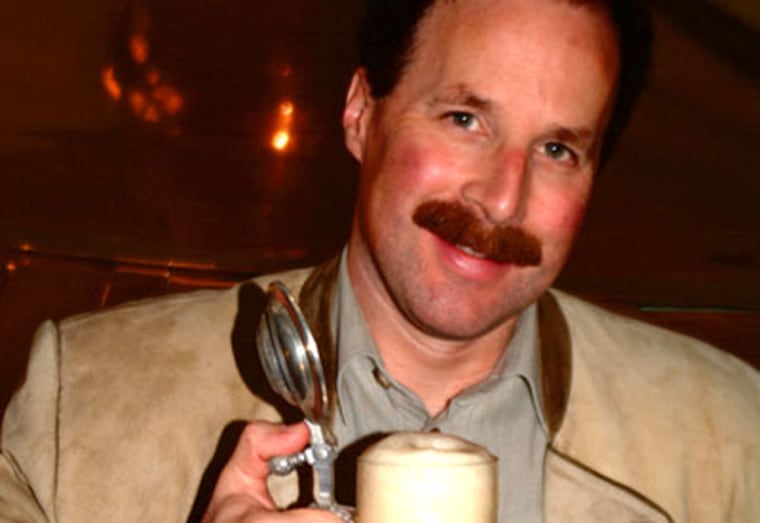In wine there is truth, according to countless vine-besotted pundits stretching back to Pliny the Elder. But the real truth is that the noble grape isn't the only game in town.
Once equated roughly with colored water and paint thinner, respectively, American beer and bourbon are closing the respect gap on wine, winning awards and appearing on tables in great restaurants. Thanks to the efforts of dedicated artisans, all three styles of beverage are now taken seriously by drink connoisseurs and foodies around the world.
In fact, beer and bourbon are now following the same path to success cut by American wine — which wasn't always the stuff of gold medals and fine dining.
Just a quarter of a century ago, wine experts looked down their Gallic noses at American vintages and thought upstart California vineyards would never challenge the old world's dominance.
That changed in 1976 when two Napa Valley wines, including Warren Winiarski's 1973 Stag's Leap Wine Cellars' SLV Napa Valley Cabernet, won a blind taste test held in Paris. The "tasting heard 'round the world" convinced experts that American wines had truly arrived and helped launched the California wine industry.
Today, California wine has a $125.3 billion dollar impact on the U.S. economy, according to a report by the Wine Institute and the California Association of Winegrape Growers. Over the years it has created 875,000 jobs in the U.S. and paid out a $25.2 billion payroll. It also generates more than $13 billion in tax revenues worldwide.
Beyond the balance sheet, the success of American wines — not just from California, but from regions as varied as Texas, Washington and New York — is just as clear cut. Since the 1976 "Judgment of Paris," American wines have regularly won gold at competitions around the globe. In the 2006 World Wines Competition alone, American vintages — a 2000 Maverick Malbec and a 2000 Carpe Diem Special Reserve — won the platinum awards for red and white wines, respectively.
Master winemakers aren't the only ones bringing home accolades. Last year, American companies Firestone Walker Brewing and Miller Brewing won the World Beer Cup championship for both midsize and large breweries, respectively. (Small went to a German brewer.) And Sierra Nevada Brewing's Draught Ale and the Boston Beer Co.'s Samuel Adams Cream Stout were both champions at the 2005 Brewing Industry International Awards.
American brewers may be flush with success, but that's only a recent phenomenon.
America may have been founded by beer lovers — Massachusetts governor Samuel Adams came from a brewing family, and Ben Franklin famously loved to tipple — but for ages domestic brews were considered watery, weak and near undrinkable. Even many American beer lovers would rather abstain than sip from a can of mass-produced swill.
Hops and barley enthusiasts can thank dedicated craft brewers for helping change that. Small, locally oriented producers like Dan Carey of Wisconsin's New Glarus Brewing or the Brooklyn Brewery's Garrett Oliver are able to experiment with rare brews and sophisticated flavors, producing just a few barrels of a style if they wish.
That's not to say they're not selling lots of beer and making good money. In 2006, America's craft brewers posted retail sales of $4.2 billion, according to the Brewers Association, a group representing craft brewers — that's over 6.6 million barrels of beer, up 11.7 percent from the previous year. Over the last three years, craft beer sales have grown at a rate of nearly 30 percent.
The same phenomenon has helped American bourbon and whiskey distillers get to a point where they can take any Scottish competitor to the mat. Kentucky-based Buffalo Trace Distillery and master distiller Harlen Wheatley have won countless accolades in the last few years, including Malt Advocate Magazine's 2005 Distillery of the Year, Wine Enthusiast Magazine's 2006 Distiller of the Year and Whisky Magazine's Distiller of the Year — twice in 2005 and 2007. All told, the distillery has racked up over 150 awards for its 15 brands since 1990.
Buffalo Trace's bourbons have gained a reputation as works of art — complex drinks that show the hand of the distiller and taste like the work of a dedicated craftsman, rather than just a bottle of mass-produced, committee-designed drek.
It's that designer's touch that has made Harlen Wheatley and the men and women like him the heart of the modern wine, beer and spirit community. Using awards, press mentions, earnings and other criteria, Forbes.com selected 10 tastemakers as the people who made the greatest contributions to their industry over the past year.
They're artisans, fans of a drink who create their product for other fans. And by doing so, they have not only improved their industries within the U.S., but helped educate and involve consumers and raised the bar for taste around the world.
